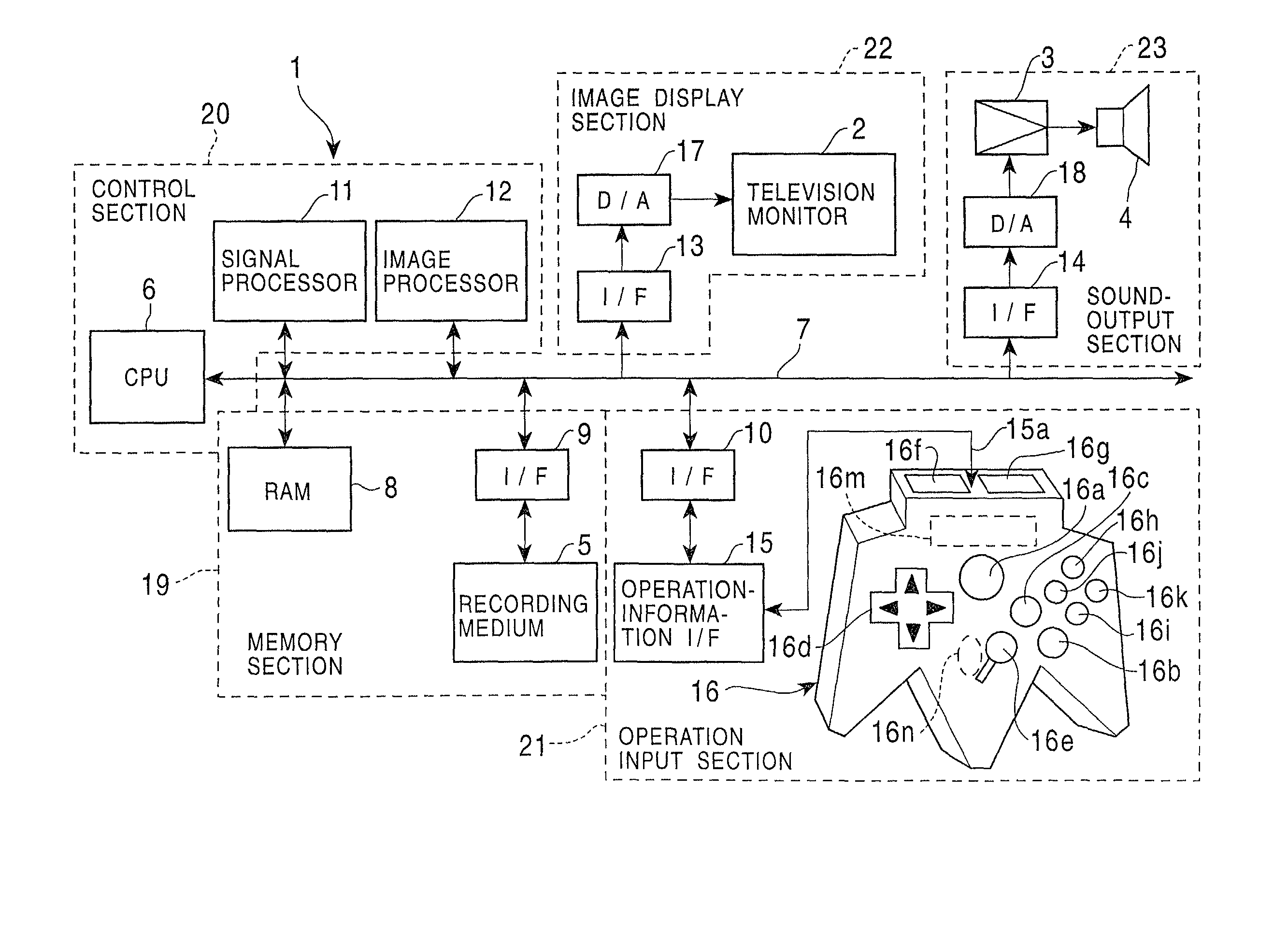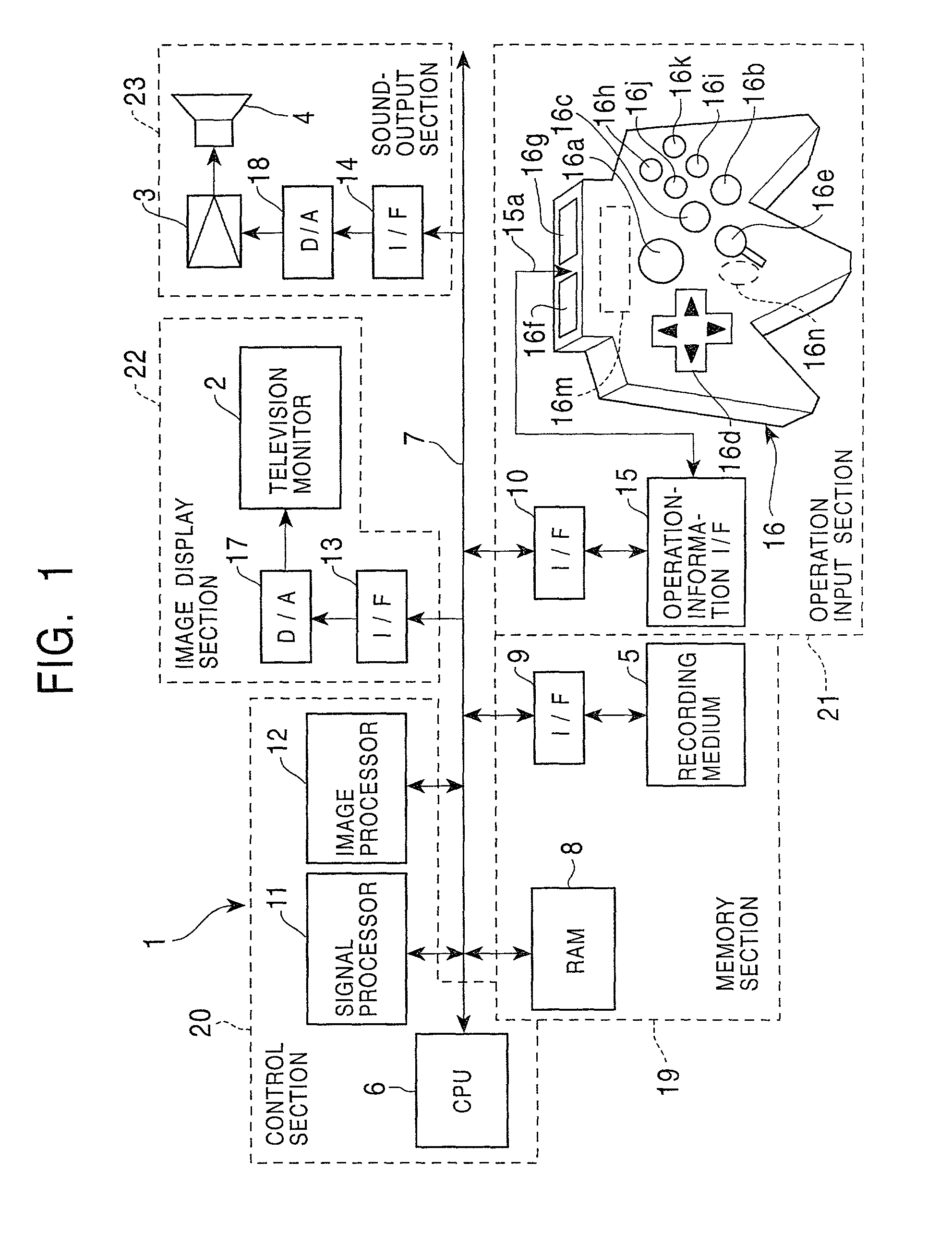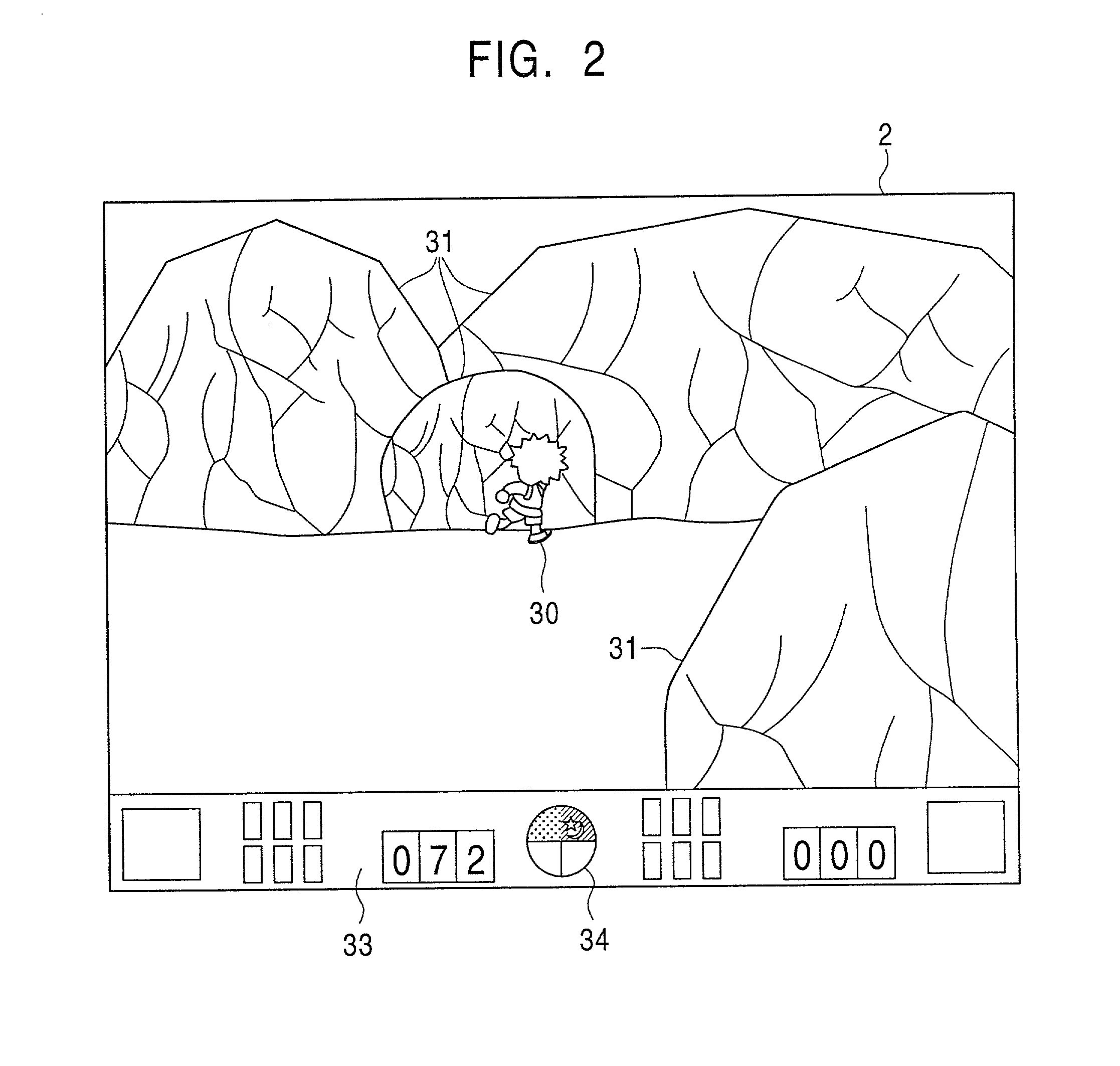Background-sound control system for a video game apparatus
- Summary
- Abstract
- Description
- Claims
- Application Information
AI Technical Summary
Benefits of technology
Problems solved by technology
Method used
Image
Examples
Embodiment Construction
[0060] FIG. 1 is a configuration view showing a game system 1 as an embodiment of the present invention. The game system 1 is constituted of a game-machine main assembly; a television monitor 2 (which is called a "monitor", hereinbelow) as display means for displaying game screens; an amplifier circuit 3 and a speaker 4 (sound-generating means) for outputting game sounds; and a recording medium 5 in which image data, sound data, and a game program composed of program data are recorded. The recording medium 5 is, for example, a so-called cassette ROM, an optical disk, or a flexible disk that is housed in a plastic package, in which program data for, for example, the aforementioned game program and an operating system are stored.
[0061] The game-machine main assembly is configured such that a bus 7 composed of an address bus, a data bus, and a control bus are connected to a CPU 6; a RAM 8, an interface circuit 9, an interface circuit 10, a signal processor 11, an image processor 12, an...
PUM
 Login to View More
Login to View More Abstract
Description
Claims
Application Information
 Login to View More
Login to View More - R&D
- Intellectual Property
- Life Sciences
- Materials
- Tech Scout
- Unparalleled Data Quality
- Higher Quality Content
- 60% Fewer Hallucinations
Browse by: Latest US Patents, China's latest patents, Technical Efficacy Thesaurus, Application Domain, Technology Topic, Popular Technical Reports.
© 2025 PatSnap. All rights reserved.Legal|Privacy policy|Modern Slavery Act Transparency Statement|Sitemap|About US| Contact US: help@patsnap.com



